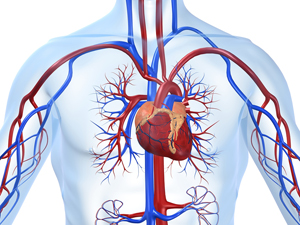That’s right, despite everything else that’s come along promising to make you younger over the last 18 years, carnosine is still the best proven anti-aging supplement out there. Yes, I’m talking about boring, old, been-there-done-that carnosine.
Unfortunately, somehow, carnosine has seemed to slip yet again from fashion, replaced by sexier, newer options. In fact, this is a repeat of a problem we saw in late 2012. How did this happen again? Well, first, I think you can thank Dr. Oz. And second, I think you can look at our almost genetically encoded belief that newer is better.
When I first started using carnosine in formulations in the mid ‘90s, there were really only two information sources in the United States promoting carnosine benefits: myself and the Life Extension Foundation. Not only was carnosine not well known in the US, but it was also hard to find good (high purity) sources for it to use in any formulations. In fact, we both had to turn to Germany at that time for sourcing our carnosine. For the next 13 years, carnosine benefits were kind of “secret” and sexy as one by one different alternative health gurus and companies began promoting them and using carnosine in formulations–often incorrectly, but that’s a different story. And then in early 2012, almost 15 years after the fact, Dr. Oz “discovered” carnosine and touted it on his show as the miracle pill for anti-aging. And suddenly, carnosine was the “it” supplement of the day. Carnosine benefits were featured in news reports; carnosine was all over the internet; and hack company after hack company started selling their own carnosine formulas that had been quickly thrown together with no understanding of how it worked or what made sense in a formula. This meant, of course, that a lot of the information about carnosine benefits was simply wrong and a lot of those formulas didn’t work. Remember: just because you see something on the internet doesn’t make it true.
Unfortunately, when anything gets that popular and with that many hacks in the game, the detractors move in. Suddenly, there were claims that carnosine might cause carnosinemia, which is utter nonsense because carnosinemia is a genetic disorder. And there were claims that it failed to perform as advertised, which was a bit more justifiable since there were so many badly formulated supplements now on the market, often using low purity, inexpensive sources for their carnosine, and too little carnosine to make any difference. But the biggest problem is that once the market gets oversaturated with your presence, it gets tired of you and moves on to the next hot thing. Speaking of which, has anyone seen Psy lately?1 http://www.youtube.com/watch?v=CH1XGdu-hzQ
Which leads us to the second problem: as a species, we always seem to be chasing the “new and improved.” Let me give you an example.
 In 1985, Robert Palmer and Power Station released an ultrafunk cover of the classic rock song, Bang a Gong, originally written and recorded in 1972 by Marc Bolan and T-Rex. In Boston, where I was living at the time, all of the radio stations started running a faceoff between the two versions, letting listeners vote on which version they liked best. Most chose the Power Station version.2 http://www.youtube.com/watch?v=alFlaMC2b3c Personally, I thought the original version was grittier and far superior–a true rock and roll classic3 http://www.youtube.com/watch?v=TVEhDrJzM8E –but hey, each to their own. What really bothered me, though, was the reasons people gave for their votes. Essentially, listener after listener said things like:
In 1985, Robert Palmer and Power Station released an ultrafunk cover of the classic rock song, Bang a Gong, originally written and recorded in 1972 by Marc Bolan and T-Rex. In Boston, where I was living at the time, all of the radio stations started running a faceoff between the two versions, letting listeners vote on which version they liked best. Most chose the Power Station version.2 http://www.youtube.com/watch?v=alFlaMC2b3c Personally, I thought the original version was grittier and far superior–a true rock and roll classic3 http://www.youtube.com/watch?v=TVEhDrJzM8E –but hey, each to their own. What really bothered me, though, was the reasons people gave for their votes. Essentially, listener after listener said things like:
- It’s new so it must be better, right?
- Man, it’s new. New is good.
- I like the new version because it’s new.
I kid you not. That was the reason for their vote, which of course had nothing to do with the actual music, and the memory of that has stayed with me strongly for the last 30 years. People didn’t vote for the new version because they liked it better…but simply because it was new. (By the way, I thought Robert Palmer redeemed himself later that year with his release of Addicted to Love, made famous by its iconic video.4 http://www.youtube.com/watch?v=XcATvu5f9vE )
So what does this have to do with carnosine benefits? Just that while everyone has been chasing the shiny and new in the world of anti-aging, carnosine hasn’t gone anywhere. In fact, as I mentioned earlier, this is the second time I’ve addressed this exact same issue, with the previous article published in 2012 after the initial Dr. Oz excitement began to fade. Today, we’re going to pick up where that article left off because, unlike the general public, mainstream research has latched onto carnosine with a vengeance. Study after study is now reporting new benefits for this amazing natural supplement–several dozen in the last year alone.
Carnosine Studies 2013-2014
Most of these studies involving carnosine now have no direct connection with anti-aging, which is difficult for researchers to quantify. Instead, now that carnosine is considered “real” by the scientific community, the studies tend to be much more specific–and measurable–with an emphasis on the role carnosine supplementation can play in reversing things like cardiovascular disease, cancer, and dementia. What makes these studies especially interesting is that although they involve measuring benefits in particular areas of the body, those benefits can easily be extrapolated out to the body as a whole, thus serving as confirmation of carnosine’s overall anti-aging benefits. Here’s a sampling.
Carnosine Benefits and Your Cardiovascular System
 As we have discussed in previous newsletters, carnosine has been shown to modulate triglyceride and glycation levels in both cell and animal systems. But a study just published last month took things one step further when it concluded that long term supplementation with carnosine may actually lower triglyceride levels and thus suppress plaque instability in diabetes-associated atherosclerosis.5 Brown BE, Kim CH, Torpy FR, Bursill CA,et al. “Supplementation with carnosine decreases plasma triglycerides and modulates atherosclerotic plaque composition in diabetic apo E(-/-) mice.” Atherosclerosis. 2014 Feb;232(2):403-9. http://www.ncbi.nlm.nih.gov/pubmed/24468155
As we have discussed in previous newsletters, carnosine has been shown to modulate triglyceride and glycation levels in both cell and animal systems. But a study just published last month took things one step further when it concluded that long term supplementation with carnosine may actually lower triglyceride levels and thus suppress plaque instability in diabetes-associated atherosclerosis.5 Brown BE, Kim CH, Torpy FR, Bursill CA,et al. “Supplementation with carnosine decreases plasma triglycerides and modulates atherosclerotic plaque composition in diabetic apo E(-/-) mice.” Atherosclerosis. 2014 Feb;232(2):403-9. http://www.ncbi.nlm.nih.gov/pubmed/24468155
And there’s more.
Atherosclerotic lesions are also associated with the accumulation of reactive aldehydes formed from the oxidation of fats in the bloodstream. But carnosine helps here too. A study published last June suggests that carnosine inhibits atherogenesis (the formation of arterial plaque) by facilitating aldehyde removal from atherosclerotic lesions.6 Barski OA, Xie Z, Baba SP, Sithu SD, et al. “Dietary carnosine prevents early atherosclerotic lesion formation in apolipoprotein E-null mice.” Arterioscler Thromb Vasc Biol. 2013 Jun;33(6):1162-70. http://www.ncbi.nlm.nih.gov/pubmed/23559625 This should not be a surprise to readers of this newsletter as we pointed out a number of years ago that one of the primary benefits of carnosine is that it bonds with carbonyl (or aldehyde) groups that if left alone attack and bind with proteins–thus destroying them. According to this study, deep tissue levels of carnosine may be an important determinant of atherosclerotic lesion formation, and treatment with carnosine could be a useful therapy for the prevention or the treatment of atherosclerosis.
Carnosine Benefits and Cancer
Back in 2012, we reported on studies that showed that carnosine protects against genetic structure damage caused by the chemotherapy drug cyclophosphamide. This is significant because cyclophosphamide is one of the most widely used chemotherapy drugs in treating cancers. But there’s another problem with cyclophosphamide beyond its tendency to destroy DNA: it suppresses the ability of the body to create new blood cells. It makes you anemic. Well, new studies published this year have found that carnosine has the potential to promote recovery from the blood building suppression induced by cyclophosphamide, as well as other chemotherapy agents, and that it can substantially improve the overall anti-tumor effects of the standard chemotherapies.7 Xu M1, He RR, Zhai YJ, Abe K, Kurihara H. “Effects of carnosine on cyclophosphamide-induced hematopoietic suppression in mice.” Am J Chin Med. 2014;42(1):131-42. http://www.ncbi.nlm.nih.gov/pubmed/24467540
So why is this important to you–assuming you don’t have cancer at the moment?
Because cancer and old age are not dissimilar. They both involve the relentless diminishing of cellular DNA, cellular integrity, and ultimately cellular function. The fact that carnosine can protect against this tri-headed assault when your body is confronted by some of the most toxic drugs known attests to its ability to protect against the same kind of assault presented by simple aging.
Meanwhile a study published last month took a look at just how carnosine might inhibit the growth of tumor cells.8 Hipkiss AR1, Gaunitz F. “Inhibition of tumour cell growth by carnosine: some possible mechanisms.” Amino Acids. 2014 Feb;46(2):327-37. http://www.ncbi.nlm.nih.gov/pubmed/24292217 Possibilities include effects on (i) glycolytic enzymes, (ii) metabolic regulatory activities, (iii) redox biology, (iv) protein glycation, (v) glyoxalase activity, (vi) apoptosis, (vii) gene expression and (viii) metastasis. The authors stated that it is possible, by acting at various sites that this “pluripotent dipeptide” [their exact words] might be an example of an internally produced “smart drug” [again, their exact words].
And finally, a study published last November found that carnosine can protect against both the damage and dysfunction caused to cells by exposure to radiation.9 Haeri SA1, Rajabi H, Fazelipour S, Hosseinimehr SJ. “Carnosine mitigates apoptosis and protects testicular seminiferous tubules from gamma-radiation-induced injury in mice.” Andrologia. 2013 Nov 12. http://www.ncbi.nlm.nih.gov/pubmed/24215656 Specifically, the study found that carnosine protects against the cellular dysfunction caused by testicular cell exposure to gamma-irradiation–ultimately even restoring the ability of those same cells to produce sperm. That’s astounding, as are its implications for carnosine’s ability to protect against the cellular dysfunctions associated with simple aging–as well as its ability to restore function where it may have been lost.
Carnosine Benefits for Your Brain and Nervous System
 Brain damage from reduced blood flow to the brain in infants from about three months before birth to one month after (HIBD) is a major cause of mortality and morbidity in neonates. Currently there is no effective therapy for HIBD. But studies published earlier this year show that indeed carnosine can reduce brain damage in such situations.10 Zhang H, Guo S, Zhang L, Jia L, et al. “Treatment with carnosine reduces hypoxia-ischemia brain damage in a neonatal rat model.” Eur J Pharmacol. 2014 Jan 23. pii: S0014-2999(14)00024-7. http://www.ncbi.nlm.nih.gov/pubmed/24463179 Coupled with previous studies that have demonstrated the neuroprotective role carnosine can play when it comes to adult brain damage, it’s not hard to see why carnosine supplementation has built a reputation as one of the best things you can do to reduce your chances of succumbing to Alzheimer’s disease and dementia.
Brain damage from reduced blood flow to the brain in infants from about three months before birth to one month after (HIBD) is a major cause of mortality and morbidity in neonates. Currently there is no effective therapy for HIBD. But studies published earlier this year show that indeed carnosine can reduce brain damage in such situations.10 Zhang H, Guo S, Zhang L, Jia L, et al. “Treatment with carnosine reduces hypoxia-ischemia brain damage in a neonatal rat model.” Eur J Pharmacol. 2014 Jan 23. pii: S0014-2999(14)00024-7. http://www.ncbi.nlm.nih.gov/pubmed/24463179 Coupled with previous studies that have demonstrated the neuroprotective role carnosine can play when it comes to adult brain damage, it’s not hard to see why carnosine supplementation has built a reputation as one of the best things you can do to reduce your chances of succumbing to Alzheimer’s disease and dementia.
In fact, it looks like carnosine offers the same kind of protection to every nerve cell in your body, not just brain cells. A study published in November found that carnosine can protect nerve cells in your eyes, for example, from damage caused by reduced blood flow to cells in the retina.11 Ji YS, Park JW, Heo H, Park JS, Park SW. “The Neuroprotective Effect of Carnosine (ß-Alanyl-l-Histidine) on Retinal Ganglion Cell Following Ischemia-Reperfusion Injury.”Curr Eye Res. 2013 Nov 8. http://www.ncbi.nlm.nih.gov/pubmed/24206188
A study published in PLos One in December found that carnosine’s ability to break up alpha-crystallin amyloid fibrils is most likely associated with carnosine’s ability to inhibit the amyloid induced cytotoxicity of human neuronal cells, thereby reducing cell deaths.12 Wu JW, Liu KN, How SC, Chen WA, et al. “Carnosine’s Effect on Amyloid Fibril Formation and Induced Cytotoxicity of Lysozyme.” PLoS One. 2013 Dec 11;8(12):e81982. http://www.ncbi.nlm.nih.gov/pmc/articles/PMC3859581/ Amyloid diseases, including hemodialysis amyloidosis, type II diabetes, Parkinson’s disease, transmissible spongiform encephalopathies, Huntington’s disease, and Alzheimer’s disease, are all characterized by the formation of insoluble deposits (aka, amyloid fibrils) in certain tissues and organs. The bottom line is that a constant stream of studies now indicates that if you don’t want to take supplemental carnosine to “look” younger and live longer, you will absolutely want to take it to better your odds of avoiding Alzheimer’s and a whole host of other amyloid related diseases.
This echoes another study published last July, also in PLoS One, that suggested that carnosine could play an effective role against the formation of fibrils/aggregates of the amyloidogenic peptide fragment Aβ1-42, which is also a major hallmark of Alzheimer’s disease injury.13 Aloisi A1, Barca A, Romano A, Guerrieri S, et al. “Anti-aggregating effect of the naturally occurring dipeptide carnosine on aß1-42 fibril formation.” PLoS One. 2013 Jul 3;8(7):e68159. http://www.ncbi.nlm.nih.gov/pmc/articles/PMC3700870/
But again, it’s not just dementia. An analytical paper published in December indicated that carnosine could play a role in protecting against a range of age related diseases of the nervous system such as Parkinson’s, as we’ve already mentioned.14 Hipkiss AR. “Aging risk factors and Parkinson’s disease: contrasting roles of common dietary constituents.” Neurobiol Aging. 2013 Dec 4. pii: S0197-4580(13)00616-7. http://www.ncbi.nlm.nih.gov/pubmed/24388766 Keep in mind that aging is a known risk factor for Parkinson’s disease. Specifically, there is evidence that indicates that excessive carbohydrate (glucose or fructose) catabolism is a factor in causing the mitochondrial dysfunction seem in Parkinson’s. One consequence of this dysfunction is an increased production of methylglyoxal (MG), an advanced glycation end product. But carnosine can not only scavenge MG but can also influence some of the biochemical events (signal transduction, stress protein synthesis, glycation, and toxin generation) associated with Parkinson’s pathology.
Miscellaneous Carnosine Benefits
An article appearing in the Sep-Oct issue of Advances in Clinical and Experimental Medicine concluded that due to its antioxidant, protective, chelating, and anti-glycation activity, carnosine could be used to prevent and treat diseases such as diabetes, neurodegenerative diseases, diseases of the sense organs and even cancers.15 Budzen S1, Rymaszewska J. “The biological role of carnosine and its possible applications in medicine.” Adv Clin Exp Med. 2013 Sep-Oct;22(5):739-44. http://www.advances.am.wroc.pl/pdf/2013/22/5/739.pdf It may also cure or alleviate many other disorders thanks to its wide spectrum of activity. The authors noted that carnosine is already used by athletes to achieve better results, due to its buffering feature, which contributes to the maintenance of the acid-base balance in the muscles. And they stated that future studies on the influence of carnosine on the human organism may lead to the therapeutic use of this dipeptide for many diseases, in addition to improving both amateur and professional athletes’ results.
On a different note, it has been proposed that that human blood platelet monoamine oxidase (MAO) activity is a biological marker of vulnerability to a variety of psychiatric diseases. Its activity is significantly inhibited as a result of aging, thus increasing the risk of problems as we age. A study published last July in the Journal of Physiological Sciences found that this age-induced inhibition of platelet MAO-A activity is reversed in as little as 21 days following the application of sufficient dosages of carnosine.16 Banerjee S1, Poddar MK. “Platelet monoamine oxidase-A activity and aging: effect of carnosine.”J Physiol Sci. 2013 Jul;63(4):279-85. http://www.ncbi.nlm.nih.gov/pubmed/23657886 The study concluded that these results suggest that carnosine withdraws the aging-induced inhibition of mammalian blood platelet MAO-A activity and restores its activity towards that observed in young mammalian blood platelets. It seems that carnosine pushes the clock on aging back anywhere and everywhere we look in the body.
Perhaps the best example to end with is another analytical paper published a year ago February in the Chemistry Central Journal that noted that carnosine has contrasting but beneficial effects on cellular activity.17 Hipkiss AR, Cartwright SP, Bromley C, Gross SR, Bill RM. “Carnosine: can understanding its actions on energy metabolism and protein homeostasis inform its therapeutic potential?” Chem Cent J. 2013 Feb 25;7(1):38. http://www.ncbi.nlm.nih.gov/pmc/articles/PMC3602167/ As we discussed years ago, carnosine delays cellular senescence and rejuvenates cultured senescent mammalian cells. The paper then went on to explain that studies have now also confirmed that carnosine inhibits the growth of cultured tumor cells as well. Based on studies in several organisms, the authors speculated that carnosine exerts these apparently opposing actions by affecting energy metabolism and/or protein homeostasis (proteostasis). Specific effects on energy metabolism include the dipeptide’s influence on cellular ATP concentrations. Carnosine’s ability to reduce the formation of altered proteins after exposure to methylglyoxal (see three paragraphs above) and enhance the breakdown of aberrant polypeptides is indicative of its ability to help maintain protein integrity throughout the body.
What makes this paper so special is the breadth of its conclusions as they cover virtually every disease commonly associated with aging. And I quote:
“Furthermore these dual actions might provide a rationale for the use of carnosine in the treatment or prevention of diverse age-related conditions where energy metabolism or proteostasis are compromised. These include cancer, Alzheimer’s disease, Parkinson’s disease and the complications of type-2 diabetes (nephropathy, cataracts, stroke and pain), which might all benefit from knowledge of carnosine’s mode of action on human cells.”
Conclusion
 Last year, Kristen and I attended the Renaissance Faire with some friends. While walking around, we heard a cry from one of the tent stalls. “Shiny things! Shiny things! Come see the shiny things.”
Last year, Kristen and I attended the Renaissance Faire with some friends. While walking around, we heard a cry from one of the tent stalls. “Shiny things! Shiny things! Come see the shiny things.”
We turned to see a peddler inside the tent, gently shaking a rack of silver earrings in the afternoon sunlight. And the silver earrings danced and sparkled in the light. And like genetically programmed moths, a substantial number of the people who heard his cry and saw the sparkling earrings were drawn to the flame. Of course, upon closer inspection, the silver earrings turned out to be more sparkle than substance.
I think that in a sense, we are like moth-people, genetically encoded to respond to the new and shiny. We are easily bored and chase the next sparkly new ingredient or face crème that promises to keep us young forever–and in the process, we abandon the familiar and boring even though it may be remarkably effective. When it comes to carnosine, that would be a mistake. Yes, it’s been around for 18 years, and Dr. Oz gave it its 15 minutes of sparkle in the sun some two years ago, but that’s no reason to abandon it. In truth, carnosine is anything but dull, boring, and old fashioned. While people are hunting for the next “big thing” in anti-aging, the active research on carnosine’s known and potential benefits in terms of slowing down the aging process and protecting against the widest possible range of age related diseases is, as we have seen, absolutely exploding. If anything, the cascade of new studies detailing carnosine’s benefits demonstrates that, in actuality, carnosine is the next big thing.
Recommendation
The bottom line is that a well-designed L-carnosine formula is still your best bet for slowing down the aging process and–as we’ve seen from just a sampling of all the studies completed in the last year alone–so much more. I’m still partial to a formula that provides upwards of 1500 mg of carnosine a day along with its complements, 1200 mg of Acetyl-L-carnitine and 240 mg of DMAE bitartrate. For now, it’s the closest thing I know of to Ponce De Leon’s Fountain of Youth. I’ve personally been taking my own version of this formula for the last 18 years.

Note: A number of people have been writing in lately asking about using beta alanine to boost carnosine levels to experience carnosine’s benefits. And yes, alanine is one of the two peptides, along with histidine, that combine to make up carnosine. And yes, if you supplement with beta alanine, your body will use it to raise carnosine levels in your body. The problem is that it’s not very efficient. According to a review of the current literature published in the Jan 2010 issue of Nutrients, you need to supplement with 4.8 to 6.4 grams of beta-alanine a day to significantly increase muscle carnosine levels.18 Julie Y. Culbertson, Richard B. Kreider, Mike Greenwood, and Matthew Cooke. “Effects of Beta-Alanine on Muscle Carnosine and Exercise Performance:A Review of the Current Literature.” Nutrients. Jan 2010; 2(1): 75–98. http://www.ncbi.nlm.nih.gov/pmc/articles/PMC3257613/ Using carnosine supplements is far more efficient.
References
| ↑1 | http://www.youtube.com/watch?v=CH1XGdu-hzQ |
|---|---|
| ↑2 | http://www.youtube.com/watch?v=alFlaMC2b3c |
| ↑3 | http://www.youtube.com/watch?v=TVEhDrJzM8E |
| ↑4 | http://www.youtube.com/watch?v=XcATvu5f9vE |
| ↑5 | Brown BE, Kim CH, Torpy FR, Bursill CA,et al. “Supplementation with carnosine decreases plasma triglycerides and modulates atherosclerotic plaque composition in diabetic apo E(-/-) mice.” Atherosclerosis. 2014 Feb;232(2):403-9. http://www.ncbi.nlm.nih.gov/pubmed/24468155 |
| ↑6 | Barski OA, Xie Z, Baba SP, Sithu SD, et al. “Dietary carnosine prevents early atherosclerotic lesion formation in apolipoprotein E-null mice.” Arterioscler Thromb Vasc Biol. 2013 Jun;33(6):1162-70. http://www.ncbi.nlm.nih.gov/pubmed/23559625 |
| ↑7 | Xu M1, He RR, Zhai YJ, Abe K, Kurihara H. “Effects of carnosine on cyclophosphamide-induced hematopoietic suppression in mice.” Am J Chin Med. 2014;42(1):131-42. http://www.ncbi.nlm.nih.gov/pubmed/24467540 |
| ↑8 | Hipkiss AR1, Gaunitz F. “Inhibition of tumour cell growth by carnosine: some possible mechanisms.” Amino Acids. 2014 Feb;46(2):327-37. http://www.ncbi.nlm.nih.gov/pubmed/24292217 |
| ↑9 | Haeri SA1, Rajabi H, Fazelipour S, Hosseinimehr SJ. “Carnosine mitigates apoptosis and protects testicular seminiferous tubules from gamma-radiation-induced injury in mice.” Andrologia. 2013 Nov 12. http://www.ncbi.nlm.nih.gov/pubmed/24215656 |
| ↑10 | Zhang H, Guo S, Zhang L, Jia L, et al. “Treatment with carnosine reduces hypoxia-ischemia brain damage in a neonatal rat model.” Eur J Pharmacol. 2014 Jan 23. pii: S0014-2999(14)00024-7. http://www.ncbi.nlm.nih.gov/pubmed/24463179 |
| ↑11 | Ji YS, Park JW, Heo H, Park JS, Park SW. “The Neuroprotective Effect of Carnosine (ß-Alanyl-l-Histidine) on Retinal Ganglion Cell Following Ischemia-Reperfusion Injury.”Curr Eye Res. 2013 Nov 8. http://www.ncbi.nlm.nih.gov/pubmed/24206188 |
| ↑12 | Wu JW, Liu KN, How SC, Chen WA, et al. “Carnosine’s Effect on Amyloid Fibril Formation and Induced Cytotoxicity of Lysozyme.” PLoS One. 2013 Dec 11;8(12):e81982. http://www.ncbi.nlm.nih.gov/pmc/articles/PMC3859581/ |
| ↑13 | Aloisi A1, Barca A, Romano A, Guerrieri S, et al. “Anti-aggregating effect of the naturally occurring dipeptide carnosine on aß1-42 fibril formation.” PLoS One. 2013 Jul 3;8(7):e68159. http://www.ncbi.nlm.nih.gov/pmc/articles/PMC3700870/ |
| ↑14 | Hipkiss AR. “Aging risk factors and Parkinson’s disease: contrasting roles of common dietary constituents.” Neurobiol Aging. 2013 Dec 4. pii: S0197-4580(13)00616-7. http://www.ncbi.nlm.nih.gov/pubmed/24388766 |
| ↑15 | Budzen S1, Rymaszewska J. “The biological role of carnosine and its possible applications in medicine.” Adv Clin Exp Med. 2013 Sep-Oct;22(5):739-44. http://www.advances.am.wroc.pl/pdf/2013/22/5/739.pdf |
| ↑16 | Banerjee S1, Poddar MK. “Platelet monoamine oxidase-A activity and aging: effect of carnosine.”J Physiol Sci. 2013 Jul;63(4):279-85. http://www.ncbi.nlm.nih.gov/pubmed/23657886 |
| ↑17 | Hipkiss AR, Cartwright SP, Bromley C, Gross SR, Bill RM. “Carnosine: can understanding its actions on energy metabolism and protein homeostasis inform its therapeutic potential?” Chem Cent J. 2013 Feb 25;7(1):38. http://www.ncbi.nlm.nih.gov/pmc/articles/PMC3602167/ |
| ↑18 | Julie Y. Culbertson, Richard B. Kreider, Mike Greenwood, and Matthew Cooke. “Effects of Beta-Alanine on Muscle Carnosine and Exercise Performance:A Review of the Current Literature.” Nutrients. Jan 2010; 2(1): 75–98. http://www.ncbi.nlm.nih.gov/pmc/articles/PMC3257613/ |












Wow Jon, you continually
Wow Jon, you continually amaze me with your nutritional health knowledge, musical savvy, and body wisdom. In my opinion, your past three newsletters were one of your best; and, I really thoroughly enjoyed your levity and wit. My power to you!
My research has shown that
My research has shown that much of the value of l-carnosine is broken down in the upper intestine and produces little benefit to the cells in the body. I have searched for enteric coated l-carnosine to prevent this breakdown in the upper intestine and have only been able to locate two sources. One is Kripps Pharmacy in Canada which offers a 400mg E.C. version but is rather pricey. However, it should avoid having to take any larger quantity as it will all be available to achieve cellular support. The other is Xtend-Life of New Zealand which incorporates about 50mg of enteric coated l-carnosine in there multi-vitamin called Total Balance. Appreciate any other inputs along this one of thought.
It’s certainly an interesting
It’s certainly an interesting concept except for that fact that study after study doesn’t support it. Numerous studies with human subjects have been consudcted using regular, non-enteric coated carnosine and have produced statistically significant results. For example:
Quite simply, as noted in the article above, a couple of hundred milligrams overwhelms your body’s daily supply of carnosinase. This is hardly a surprise since research has shown that little or no carnosinase activity is found in human gastric or colonic mucosa. Anything beyond about 200 mg of uncoated carnosine makes its way into the bloodstream.
Why dramatically overpay for enteric coated carnosine when it’s not necessary? Perhaps your research is coming from companies with an agenda to sell you overpriced supplements. And as for a 50 mg dose, it will have barely any impact, even if 100% of it passes through the intestinal undamaged. It’s simply to low.
Jon’s advice on supplementing with plain carnosine is backed by 18 years of actual experience using carnosine in supplements. No one in the United States surpasses that, and only a handful of formulators can claim anything close to it when it comes to real life experience using carnosine in supplements.
Unless your research comes from people who have a comparable track record of hands on experience, you may want to reconsider it.
Do you have any directions
Do you have any directions that one should take who has just found out that he has CAD-Cold Agglutinin Disease as far as supplements are concerned?
‘Moth people’ is an intesting
‘Moth people’ is an intesting description but not very scientific. Unsane (as opposed to Sane) may be better. Sane people can understand cause and effect and generally choose the responsible, appropriate, actions for the better outcome for their genes. Unsane people don’t.
The challenge is the Unsane have the vote and can for vote Unsane politicians.
I guess we are to expect a plauge of moths?
Great article, thanks as
Great article, thanks as always. In the UK the T-Rex/Marc Bolan track was released as ‘Get it on’, I’m not sure if it was named differently in US? I think also the Robert Palmer version was similarly named. Sorry to be a pedant..
Posts by Others
Posts by Others
Maya Nayman
Dear Dr. Barron! Today I started to do some research on the internet; and I’ve found a very interesting information about Carnosine:The Hayflick limit has been found to correlate with the length of the telomere region at the end of a strand of DNA. During the process of DNA replication, small segments of DNA at each end of the DNA strand (telomeres) are unable to be copied and are lost after each time DNA is duplicated.[8] The telomere region of DNA does not code for any protein; it is simply a repeated code on the end region of DNA that is lost. After many divisions, the telomeres become depleted and the cell begins apoptosis. This is a mechanism that prevents replication error that would cause mutations in DNA. Once the telomeres are depleted, due to the cell dividing many times, it will no longer divide having reached its Hayflick limit.[9][10]
This process does not take place in cancer cells due to an enzyme called telomerase. This enzyme maintains telomere length, which results in the telomeres of cancer cells never shortening. This gives these cells infinite replicative potential.[11] A proposed treatment for cancer is the usage of telomerase inhibitors that would prevent the restoration of the telomere, allowing the cell to die like other body cells.[12] On the other hand, telomerase activators might repair or extend the telomeres of healthy cells, thus extending their Hayflick limit. Telomerase activation might also lengthen the telomeres of immune system cells enough to prevent cancerous cells from developing from cells with very short telomeres.
Carnosine can increase the Hayflick limit in human fibroblasts,[13] and also appears to reduce the rate of telomere shortening.[14].
So, as I understand, Carnosine can help Cancerous cells to replicate!? And if so, taking Carnosine is very dangerous! What can you say about this? Sincerely, Maya, N.
We asked Jon Barron, and he
We asked Jon Barron, and he responded:
“Sometimes a little knowledge is a dangerous thing. The breadcrumbs that you have laid out don’t actually lead to the conclusion you arrived at. Without arguing DNA theory and biochemistry, the following studies should indicate to you that, in fact, carnosine’s effect on cancer is exactly the opposite of what you arrived at. Or you just might go with the first sentence in the first study cited: “The dipeptide L-carnosine (β-alanyl-L-histidine) has been described as enigmatic: it inhibits growth of cancer cells but delays senescence in cultured human fibroblasts and extends the lifespan…”
And that’s what Jon Barron had to say about it.
Hello, Maya,
Hello, Maya,
did You find put, whether carnosine would be dangerous or not?
On the first of April in 2014 You asked here.
In the meantime I thought having read, that Carnosine would be a great antioxidant preventing cancer, but perhaps You found out something different?
Would be great to read more,
thank You.very much.
Is your formula suitable for
Is your formula suitable for vegans.
If you are talking about
If you are talking about Baseline Nutritionals’ carnosine formula, I would contact them directly for any product related questions.
I took l-carnosine a couple
I took l-carnosine a couple a years ago after I read about it in life extention magazine and susan somers book “Breakthrough” for my cataracts and not did it get rid of them but my skin became really soothe so I check my skin ocassionally and if it gets rough I go back on the L-carnosine 500 mg. and take it until I think my skin is OK. Since I read your comments on it I will probably take it forever. You are a gift from God and I thank you for your comments. I am going to pray and ask others to pray for you and your endeavors forever. Thank you vey much..
Thankyou for all of this
Thankyou for all of this information. I do have a few questions, carnosine is said to chelate copper and zinc, plus others, can it cause a deficiency in these minerals?
Despite some claims on the
Despite some claims on the internet, carnosine doesn’t chelate zinc and copper, taking them out of the body, Instead, it “binds” with them and “mediates” them—which is very different.[1], [2] [3]. You don’t have to worry about deficiency.
in this article you say that
in this article you say that you’ve been taking your formula for 18yrs and in the article you wrote just 2yrs ago titled “Carnosine, still the best for anti-aging” you say that you’ve been taking it for 10yrs. please explain
They are both correct. Jon
They are both correct. Jon originally made his own formulas for his own personal use 18 years ago, then years later Baseline Nutritionals started to sell them to the public. Then he could enjoy the product sold at the company, which has been 10 years. Make sense? Also, this article was just recently updated, so it was not written just 2 years ago, but much longer.
Hi,
Hi,
I’ve been taking daily doses of 500mg of L-Carnosine, 500mg of Acetyl-L-Carnitine and 500mg of DMAE for about 2 years now. The first two aren’t nearly as much as you recommend in this article. Would you say it’s still useful to take at these dosages or does it only have a real effect at the amounts you mentioned?
Also, most of the studies mentioned here were on mice, rats and fruit flies. Do you know if they’re planning more studies on humans at this point or is that still a while off?
Thanks.
As Jon has explained, ideal
As Jon has explained, ideal dosage for carnosine is dependent on factors such as age and diet. So 500 mg a day is neither high nor low until you consider the other factors. It’s high for a young adult who consumes plenty of carnosine rich food, but low for a vegetarian senior citizen. As for the other ingredients, the dosages you mention are pushing the high end.
N-acetylcarnosine is
N-acetylcarnosine is mentioned in several places before the CARNOSINE discussions are “clicked” on, but, I find no discussion about N-acetylcarnosine!!!!! There is no mention of N-acetylcarnosine in any of the Barron posts???? Am I missing something here?
Dr. Robert Bolmarcich
N acetyl carnosine is the
N acetyl carnosine is the form of carnosine used in eye drops. In Jon’s reports, you will find it included in some of the studies that Jon references—in footnote 31 in this report, for example. http://www.jonbarron.org/article/carnosine-still-best-anti-aging